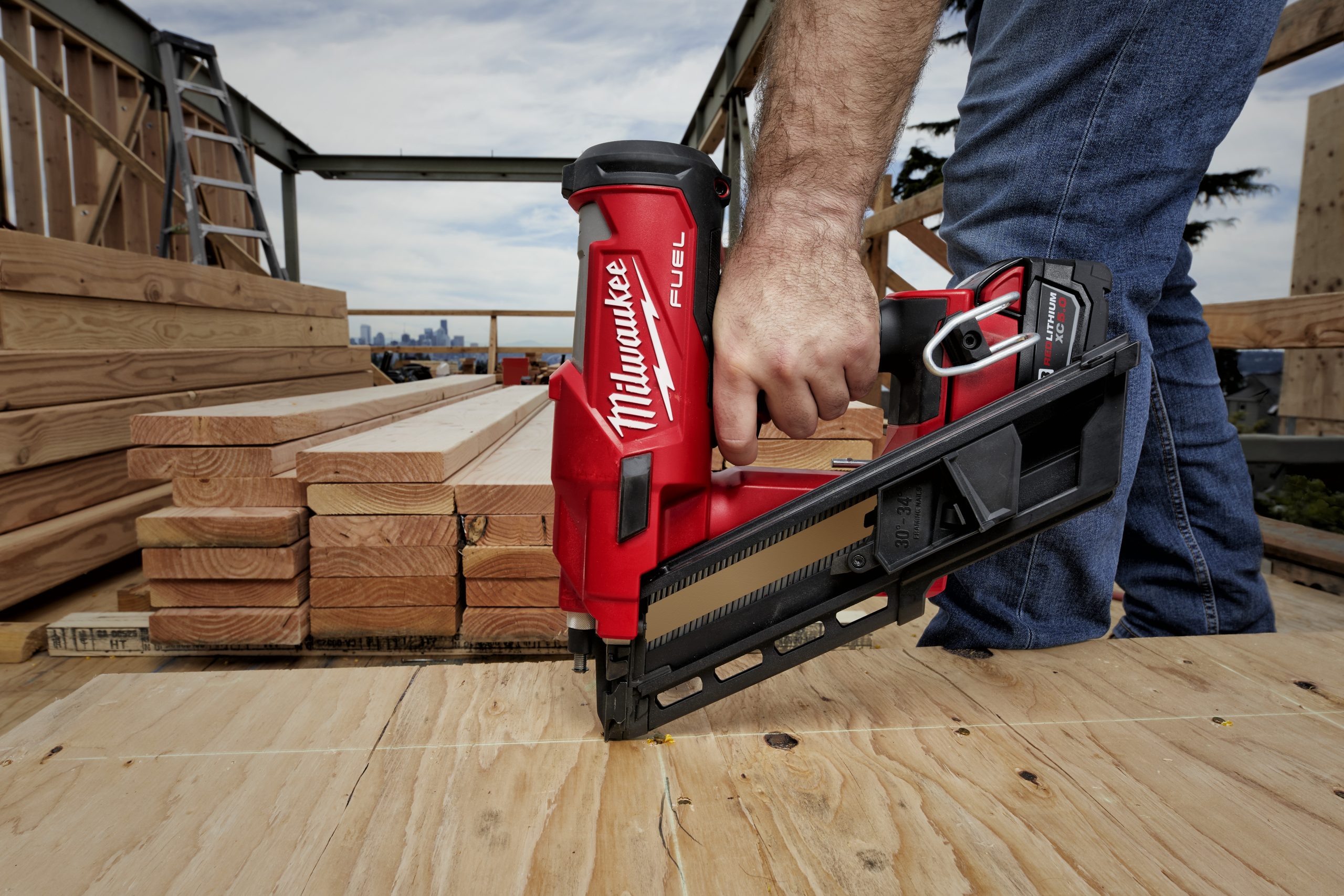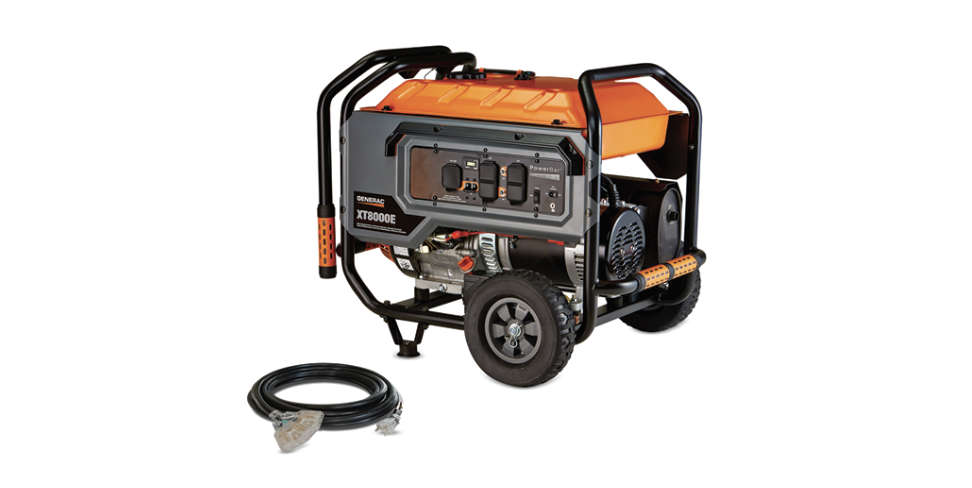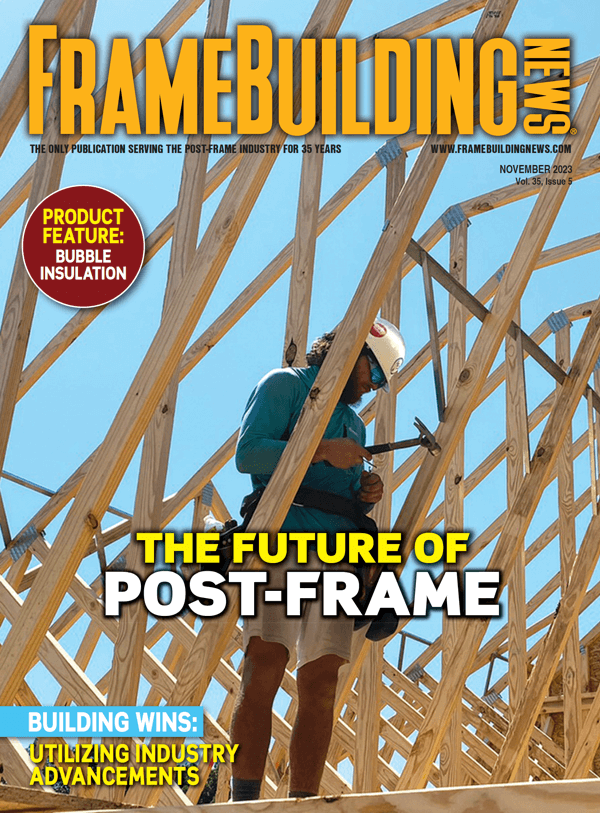How to reduce, handle, and dispose of post-job debris
By Jessica Franchuk
According to the U.S. Environmental Protection Agency (EPA), 569 million tons of construction and demolition (C&D) debris were generated in the United States in 2017. This massive quantity of waste was more than twice the amount of municipal solid waste that was generated in the same year. Now, they go on to clarify that demolition represents more than 90% of the total C&D debris generation, with construction representing less than 10%. Still, that leaves us with an astounding 56.9 million tons of debris from construction alone.
As members of the construction industry, what can post-frame builders do to help? Read on for ways to do your part.
Get Ahead of It
One of the easiest and most cost-effective methods to deal with waste is to work to reduce it before you’re even on the job site. Today’s software programs are able to plan projects down to the exact cuts and the precise amount of fasteners needed, reducing the waste and excess generated once the build has begun. Head to page 31 of this issue for more information on how one software system, SmartBuild, has been working with Graber Post to increase bid efficiency and decrease job site waste.
Taking the proper care to be precise in planning as well as on-site measuring/cutting could mean the difference between a small bin of debris and an entire dumpster full. If you have any inexperienced members on the crew, take the time to properly train them to avoid mistakes that can result in not just lost money and time, but unnecessary trash in the already overfilled landfills.
Handling Waste On-Site
Once you’re on the job site, the most important thing is to make a plan before you start and try to remain organized (as well as enforcing the waste management plan/strategy with all workers). Determine ahead of time which items can be reused or repurposed, what can be sold as scrap, items that can be recycled, and those that are destined for the dump. It’s a lot easier to have several designated piles throughout the build than try to sort through a huge heap at the end.
If you know you’ll have a significant amount of actual “garbage,” one option is to rent a roll-off dumpster. You may have local options, and Waste Management has several sizes available and services most of the continental U.S. Be sure to avoid using a small, residential waste bin, as there are strict limitations on what materials can and cannot go into them (not to mention most C&D debris is too heavy). Standard items to keep out of them include: concrete, construction lumber, asphalt, shingles, drywall, metals, bricks, doors, windows, plumbing, and stumps/wood from clearing the site.
Post-Job Disposal
Now that the job is done, what do you do with the leftover debris and waste? Anything that can be recycled, resold, or reused is easy to manage. Everything else can be easy to handle, too.
One simple option is the aforementioned roll-off rental dumpster. Order it prior to the job start, fill ‘er up, then give them a call to have it picked up and hauled away. Don’t need anything quite so large? For smaller jobs, remodels, and building add-ons, try looking at Haultail. This on-demand delivery service was built to pick up and deliver items of any size, as well as haul junk and debris from construction sites. Their tear-resistant, woven construction bags can each hold up to 110 pounds, be used up to five times, and are easily recyclable at the end of their useful life. Their durability and patented poly-woven plastic fiber construction make them rugged enough to stand up to many C&D uses. The bags are easy to find in over 10,000 national home improvement retailers. The idea of Haultail started with the woven bags, which were created for contractors who were in need of heavy-duty options for debris disposal. The on-demand delivery service became a natural extension of the business, offering seamless pickup and drop-off of all waste material. Haultail utilizes their proprietary database of all local landfills, weigh stations, and donation centers, ensuring that any and all waste is disposed of properly. Anything that can still be used will be donated accordingly by the company.
For additional insight into ways to reuse or recycle post-job waste, visit the EPA’s web page at www.epa.gov/smm/sustainable-management-construction-and-demolition-materials. FN





















